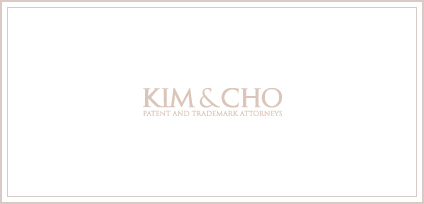
AMENDMENT TO THE ENFORCEMENT REGULATIONS OF THE DESIGN PROTECTION ACT
December 01 2010 |

An Amendment to the Enforcement Regulations of the Design Protection Act (the "Amendment") has come into force beginning January 1, 2010. The major contents are as follows:
1. Requirements for drawings will be simpler.
(1) Flexibility in the method and number of drawings to be submitted.
Previously, in case of filing an application for a three-dimensional design, a perspective view and six drawings through orthographic projection (front, rear, left side, right side, top and bottom views) should be submitted, and in case of filing an application for a two-dimensional design, a surface view and back view should be submitted. However, under the Amendment, even only one drawing can be submitted for a design application, if the contents of the design and the entire shape to be registered are clearly specified in such single drawing.
(2) Drawings may be submitted in three-dimensional image files.
Previously, in case of submitting drawings in an electronic file, such as JPEG, the drawings shall be submitted in two-dimensional image files only. However, under the Amendment, the drawings may also be submitted in three-dimensional image files. Specifically, the drawings may be submitted in DWG (Drawing), DWF (Design Web Format) or 3DS (3D studio) file formats. One point to bear in mind is that when submitting drawings for amendments after filing an application for a design, the drawings must be submitted in the same file format used for the original application drawings.
The Amendment should alleviate some of the issues that occurred while claiming priority based on the strict drawing requirements of the previous Korean design practice.
2. Expansion of goods subject to an application for an unexamined design registration.
The goods subject to an application for an unexamined design registration have been expanded from six classifications to ten classifications. It will now become possible for these goods to obtain rights quickly and the four additional classifications are highlighted below.
A1: Processed foods, etc.
B1: Clothing
B2: Fashion accessories
B5: Footware
C1: Bedclothes, curtains, etc.
F1: Training supplies, painting and calligraphy supplies
F2: Writing supplies, office supplies
F3: Office paper, printed matter, etc.
F4: Labels, packaging containers, etc.
M1: Textiles, holograms, etc.
- Graphic Design
Designs falling under unexamined registrations will be registered after inspection of only very basic and perfunctory matters, such as whether the design application is submitted appropriately in due form, whether there is a possible concern for the design to harm public order or morals, and whether the design can be easily created on the basis of shape, pattern, color or their combination which are already widely known in Korea.
3. Expansion of the number of designs for one set of article.
Where two or more products are used together as a set of products (i.e. a set of fork, knife, and spoon, a set of tea apparatus, and a set of smoking apparatus etc.), the design of the set may be registered if the set constitutes a coordinated whole. These goods are designated in the list provided by the Regulation of the Korean Design Protection Act.
Under the Amendment, the types of designs that may be registered as a set have been expanded from 31 to 86. Examples of new articles that may be considered a set under the Amendment are one set of automobile seat covers, one set of washing kit, one set of golf clubs and one set of purse and belt.